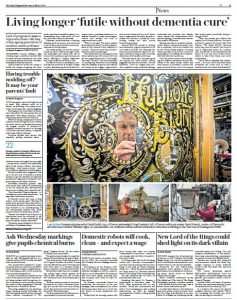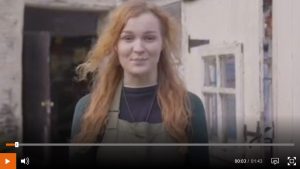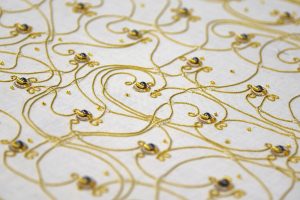We offer our deepest sympathies to the people of Paris at the devastation to the magnificent Notre-Dame.
These terrible events remind us that our shared cultural heritage is hugely important to our sense of identity. As we consider where the skills will come from to restore the tangible heritage of the building, we also come to understand the value of the intangible cultural heritage, that is the traditional knowledge and skills that created such beautiful buildings. The Heritage Crafts Association exists to ensure that this knowledge is preserved and passed to new generations. We are already working to support the craft industries that will be so in demand in the coming years to restore buildings, their decorative interiors and contents that suffer in such circumstances. We are working to ensure that young people have access to learn these skills so that they may pursue a positive and fulfilling career.
When a tragedy such as this strikes, it is easy to consider only the physical cultural heritage. But quietly, our intangible heritage is being lost at an alarming rate, which ironically puts the physical heritage at even greater risk. We must put a greater value on the skills of craftsmen and women and appreciate their enormous contribution to our shared heritage.
Julie Crawshaw
Executive Director – Heritage Crafts Association
Dozens of traditional British crafts that have been practised for centuries are in serious danger of vanishing forever. Craftspeople, from flute makers to glass sign painters, and wagon builders to bell founders, are on the brink of extinction as fewer people are learning their skills, according to the Red List of Endangered Crafts.
 Following the launch of the Red List of Endangered Crafts 2019 edition, the story was picked up across a range of print and broadcast media.
Following the launch of the Red List of Endangered Crafts 2019 edition, the story was picked up across a range of print and broadcast media.
The Daily Mail ran with a double-page spread entitled ‘Save our skills’, with the its online edition opting for ‘Holding on to Britain’s heritage’.
The Express featured ‘Ancient crafts under threat as vital skills not passed on’ and it was also reported on the BBC Radio 4 Today programme and BBC Alba.
Magazines including Country Life, Homes & Antiques and the Countryman also covered the story, with Reclaim magazine producing a special 16-page supplement on at-risk heritage crafts.
Here’s a selection of the coverage:
 The New York Times
The New York Times
‘Just How Endangered Is Watchmaking?’
20 Feb 2019
Epoch Times
‘Holding On to Heritage Crafts’
20 Feb 2019
Reclaim magazine
‘British Heritage Crafts’ (16 page supplement)
March 2019 edition
The Countryman
‘Heritage Crafts Conservation’, pp. 40-44
March 2019 edition
Homes and Antiques magazine
‘The art of survival’, pp. 130-135
April 2019 edition
Mail Online
‘Holding on to Britain’s heritage’
8 March 2019
Daily Mail
‘Save our skills!’ pp. 36-37
9 March 2019
Daily Express
‘Ancient crafts under threat as vital skills not passed on’, pp. 20-21
9 March 2019
Daily Telegraph
‘Last in Line’, p.11
9 March 2019
BBC Radio 4 Today (from 1.49:24)
9 March 2019
Daily Mirror
’36 old crafts set to vanish’, p. 33
9 March 2019
The Herald
‘Dozens of ancient crafts are now listed as dying arts’, p. 10
9 March 2019
Daily Record
‘Extinction threat to UK crafts’, p. 34
9 March 2019
Country Life
‘On the danger list’
13 March 2019
BBC Alba
An Là (News) (from 24:18)
14 March 2019
 Zoe Collis, the papermaking apprentice at Two Rivers Paper who was recruited in through the HCA’s 2017 pre-apprenticeship pilot scheme (and has since gone on to be awarded a Trailblazer apprenticeship, HCA/Arts Society bursary and QEST Scholarship) is now a role model for young heritage crafts recruits after featuring on the BBC Bitesize website.
Zoe Collis, the papermaking apprentice at Two Rivers Paper who was recruited in through the HCA’s 2017 pre-apprenticeship pilot scheme (and has since gone on to be awarded a Trailblazer apprenticeship, HCA/Arts Society bursary and QEST Scholarship) is now a role model for young heritage crafts recruits after featuring on the BBC Bitesize website.
In the video case study, Zoe’s boss Jim Patterson said: “The largest impact that Zoe’s had on the business is by raising the amount of paper that we make and of course the amount that we sell. We’ve doubled our production in the year since Zoe’s been here.”
It’s wonderful to think about all of the future careers in heritage crafts this might inspire!
https://www.bbc.com/bitesize/articles/zvrxrj6
The trailer for our Gilding the Gingerbread film, supported by The Goldsmiths’ Company and produced by Palio Films. DVDs of the full film are available from the HCA Shop and you can hear Ellie Berkhead speak about the project at Making is Good for You – The Heritage Crafts Association Conference 2019.
Gilding the Gingerbread trailer from The Heritage Crafts Association on Vimeo.
 The Embroidered Computer by Irene Posch and Ebru Kurbak doesn’t look like what you might expect when you think of a computer. Instead, the work looks like an elegantly embroidered textile, complete with glass and magnetic beads and a meandering pattern of copper wire. The materials have conductive properties which are arranged in specific patterns to create electronic functions. Gold pieces on top of the magnetic beads flip depending on the program, switching sides as different signals are channeled through the embroidered work… Read more
The Embroidered Computer by Irene Posch and Ebru Kurbak doesn’t look like what you might expect when you think of a computer. Instead, the work looks like an elegantly embroidered textile, complete with glass and magnetic beads and a meandering pattern of copper wire. The materials have conductive properties which are arranged in specific patterns to create electronic functions. Gold pieces on top of the magnetic beads flip depending on the program, switching sides as different signals are channeled through the embroidered work… Read more
See also Irene Posch’s knitted radio





 The
The 
